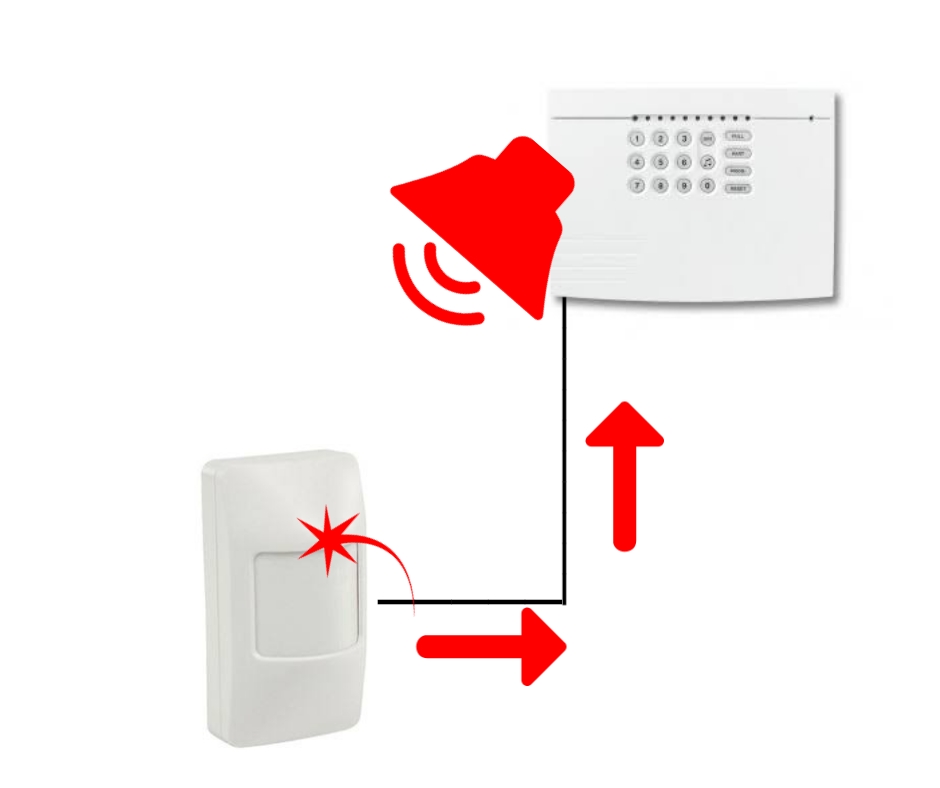An explanation of why we feel pain when injured
By Isabél Lamprecht (B.Sc Physiotherapy)
Knowledge is power and the same is true about understanding pain. Many people will experience pain sometime in their lives. The circumstances and emotions that we feel at that time determine how we perceive pain.
Pain is subjective in nature which means that it is very difficult to measure and to compare, as no two people will describe their intensity of pain as exactly the same. It is based solely on your own experience of it. Therefore pain is always what you feel it is.
The International Association for the Study of Pain (IASP) defines pain as an unpleasant sensory and emotional experience associated with actual or potential tissue damage, or described in terms of such damage.
In this article we would like to go through the basic principles of what pain is, especially acute pain after an injury.

Pain is necessary
Most of us are alive today due to pain. Pain is our body’s way of telling us that whatever we are doing is causing damage or injury and that we should stop doing that. Pain also helps us to protect an injured area by allowing time for healing.
Imagine you are walking across the street and you trip over a rock, spraining your ankle. When you stand up and put weight on your ankle you feel a strong shooting pain and start hopping on the other leg. For a few days after the fall you are unable to stand on the sprained ankle and this provides your leg with time to heal. Over the course of a few weeks your ankle heals and you are able to walk unassisted again.
Pain was your body’s way of warning you that you need to protect your foot and that you need to be more aware of the surface you are walking on so that you don’t sprain it again.

Pain is in your brain
This can sometimes be a difficult statement to understand. Pain is the signal that is sent from your brain to your body telling you that there is something wrong, not the other way around. Let us look at this example to demonstrate this fact better.
The diagram demonstrates an alarm system. You have an alarm sensor in a room that picks up on movement, the sensor then sends a message via a cable to a control panel. The control panel interprets whether the threat is dangerous and if so it sounds an alarm to warn the household of an intruder.
This same concept can be used to explain what pain is. Pain is the alarm sounding when your brain interprets a threat.

Pain is a message
Your body is an intricate network of nerves constantly sending and receiving messages. Most of the time this is completely out of your control. Your brain is receiving messages from all your organs, limbs, muscles and skin. It then interprets those messages and sends back “instructions” to those body parts on the necessary action to be taken.
Sometimes your body can react before receiving the message. Have you ever pulled your hand quickly away from a cold stove top thinking that you burned? It took you a split second to get the message from your brain that there was no danger.

The pathway in which pain travels
Your skin, joints, muscles and organs have receptors called nociceptors. These are similar to the alarm sensor that was demonstrated earlier. These receptors are specifically designed to pick up on painful stimuli (nociception). They then relay the message via nerves, up along the spinal cord to the brain. The brain then interprets that message and determines whether it is dangerous. If so the brain will send an alarm signal down the spinal cord towards your body telling it to stop doing whatever is causing you harm.
Your nervous system also creates an inflammatory reaction which causes swelling and redness to speed up the healing of the injured tissues. The estimated time for normal tissue recovery is between 6 weeks and 3 months. This time period is necessary for healing to take place. In some instances pain persists, this is where chronic pain sets in and will be discussed further in a follow up article.

Putting it all together
- Pain is necessary for you to stay safe.
- Pain comes from your brain when it picks up on dangerous signals from your body.
- Pain is a message from your brain giving your body instructions.
- Pain follows a pathway where a stimulus is sent up along the spinal cord. The brain interprets that message and then send a pain signal back down to the body.
We hope that this article was insightful in explaining why we feel pain when injured and how the brain interprets messages from the body. Please check out our follow up article on chronic pain to understand better why pain may persist longer than the normal expected recovery time.
References:
https://altatherapies.com/physicaltherapy/pain-explained/
http://www.iasp-pain.org/Education/Content.aspx?ItemNumber=1698
Images:
<a href=”https://www.freepik.com/free-photo/unrecognizable-woman-with-sore-neck-and-back_1907581.htm”>Designed by Freepik</a>
<a href=’https://www.freepik.com/free-photo/close-up-of-woman-touching-her-right-ankle_903714.htm’>Designed by Freepik</a>
<div>Icons made by <a href=”http://www.freepik.com” title=”Freepik”>Freepik</a> from <a href=”https://www.flaticon.com/” title=”Flaticon”>www.flaticon.com</a> is licensed by <a href=”http://creativecommons.org/licenses/by/3.0/” title=”Creative Commons BY 3.0″ target=”_blank”>CC 3.0 BY</a></div>
<a href=’https://www.freepik.com/free-photo/close-up-of-man-rubbing-his-painful-back-isolated-on-white-background_1602564.htm’>Designed by Freepik</a>
<a href=’https://www.freepik.com/free-photo/spinal-cord-with-red-details_929225.htm’>Designed by Freepik</a>
Recent Comments